How to Bake BrIt'll outBy: Food Network Kitchen
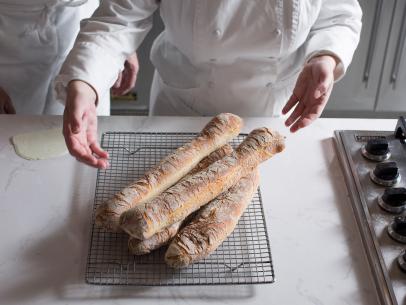
2015 Food Network
Bread baking is its own world, different from baking cookies, cakes or pies. Its unique combination of ingredients — flour, yeast, water, salt and, most importantly, time — requires you to approach it differently.
First and foremost, bread is alive. Its characteristic texture comes from fermentation, which is the basic activity of yeast, a single-celled fungus (the good kind, not the scary kind). Yeast reacts with the sugars in flour to create carbon dioxide (among other things), which leads to the airy, bubbly texture and the taste we associate with bread.
If you get really into bread making, you can delve deeply into the art and science of the perfect loaf. There's no limit to the level of obsession passionate bread bakers can have. Here’s a 101 primer to help you get started.
Equipment

2015 Food Network
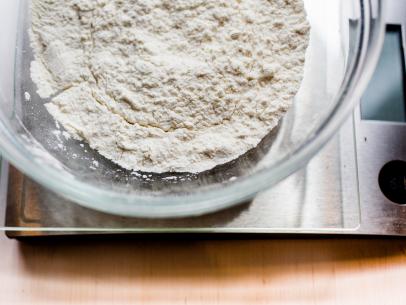
2015 Food Network

2015 Food Network
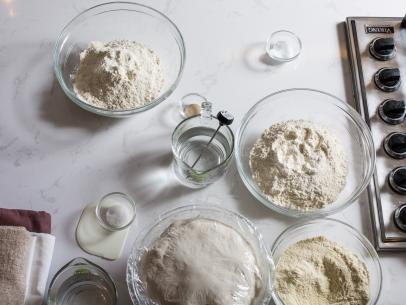
2015 Food Network
Ingredients
Yeast
Active dry: You'll usually see this in small packages in the dairy section. It needs to hang out in warm water (110 degrees F) for a few minutes before you use it — this wakes the yeast up and gets it ready for your recipe. Check expiration dates on these, and keep your packets in a cool, dry spot.
Rapid-rise (sometimes called instant or bread machine yeast): This is a hardy strain of yeast, and does not need to be hydrated before using. While it doesn't actually rise more rapidly than any other yeast, you get to skip the step of hydrating, making the process a couple of minutes faster. It is also more concentrated than active dry yeast, so you'll get a fuller rise in some recipes than with the same amount of active dry yeast.
Fresh yeast: More prevalent in professional bakeries. We don't recommend it for our recipes, because it's hard to find and needs to be used up pretty quickly once you buy it. If you do have access to fresh yeast, substitute 0.6 ounces of it for each packet of active dry yeast called for in any given recipe.
Starter (aka wild fermentation): This mix of flour, water and sugar gives sourdough its tangy and complex flavor. Starters rely on the atmosphere to become populated with microscopic friends, and thus turn into an active culture you can use in your bread. Starters need time and some attention but are totally worth the effort.
For the most-accurate way to measure, use a fork to lightly mix up your flour in its bin or bag. Then use a scoop to pour flour into measuring cups and a straightedge to level off any excess flour.
All-purpose: Choose unbleached.
Bread: Also go for unbleached and preferably between 12 percent and 13 percent protein.
Gluten-free: Thanks to some great gluten-free bread baking cookbooks, you don’t have to rely on store-bought goodies anymore. And there is also a wonderful new family of gluten-free flours to experiment with, like teff, buckwheat and sorghum.
Sprouted: This is made from grains that are allowed to sprout; once the shoot appears, they are then dried and milled into flour. It's still very much a special-order item; look for it online.
Table salt and kosher salt are not evenly interchangeable in bread baking, so be sure to use whatever the recipe calls for. To be even more precise, if a specific brand of kosher salt is called for, then try to use that; crystal size and weight can vary depending on the brand. Salt sharpens and brightens the flavor in baked goods and helps prevent staleness.
Water
This is water for mixing (and not activating yeast). It should be around 80 degrees F. Some recipes will call for spring water, because certain minerals in tap water can have a negative effect on yeast fermentation.
Time
This is perhaps the most-important ingredient for the success of any loaf of bread. Take care not to rush the fermentation and proofing of dough. The longer the dough has to rest, the more flavorful it will be. (See cold fermentation below).
Butter, eggs and milk
These are found in enriched breads like brioche and challah. Most recipes will call for unsalted butter, large eggs and whole milk. These three can contribute to the hydration, tenderness, flavor and color of bread.

2015 Food Network
Dusting
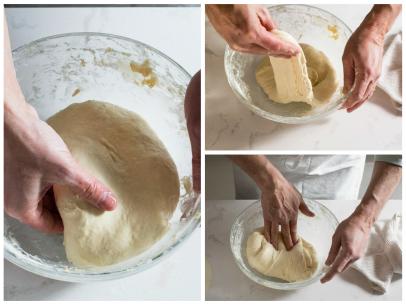
Kneading
Traditional kneading: This is done in a mixer with a dough hook or by hand. Don't push so hard that you tear the dough, or knead so long that the dough gets taut. Soft and supple is the way to go.
Stretch-and-fold (shown left): This is the method of choice for many professional bakers and cookbook authors. The dough is first under-mixed into a shaggy mixture, which rests and is then gently strengthened, to develop gluten, with a series of stretches, folds and rests.
No-knead: Pioneered (but not discovered) by Jim Lahey, a New York City-based baker and the owner of Sullivan Street Bakery, this method relies on a long, cold fermentation. The loaves are often baked in a Dutch oven.
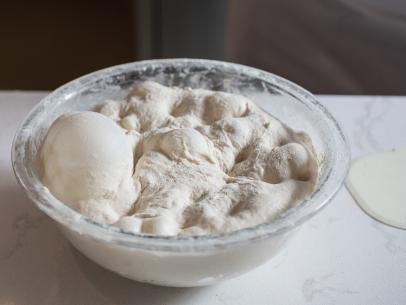
2015 Food Network
Fermentation and Proofing
When it’s done proofing, your dough should look fuller and doubled in size. If it's tight and dense, let it proof longer; if it's airy and about to collapse, then it's gone too far.
There are two temperature options for proofing and fermenting bread.
Warm: In a warm — but not hot — spot, about 70 to 80 degrees F. Generally, the kitchen counter is fine. If your kitchen is drafty, then inside the turned-off oven or the microwave works too. If it's too warm in your kitchen, find a cooler room.
Cold: Putting the dough in the fridge slows the rise, which helps develop flavor. If you get called away for some reason when proofing a dough, refrigerate it until you get back.
Forming
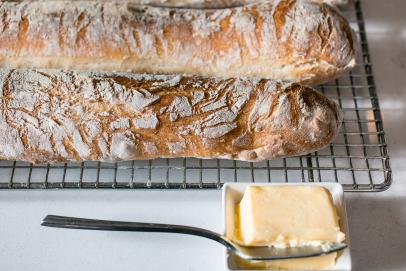
2015 Food Network
Baking
Feel: A properly baked loaf of bread will feel light and hollow when tapped on a countertop.
Smell: Your bread should smell toasted and nutty.
Temperature: Though it may seem odd, you can also take the temperature of bread to check for doneness. Look for 190 degrees F with an instant-read thermometer. The more you bake, the more you’ll be able to rely on look, feel and smell to determine when your bread is ready.
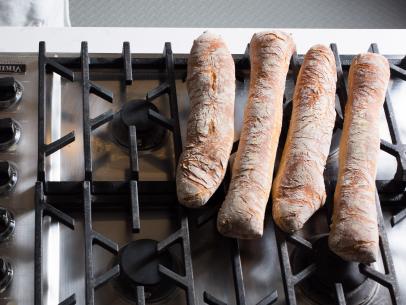
2015 Food Network
Cooling
MORE FROM:





